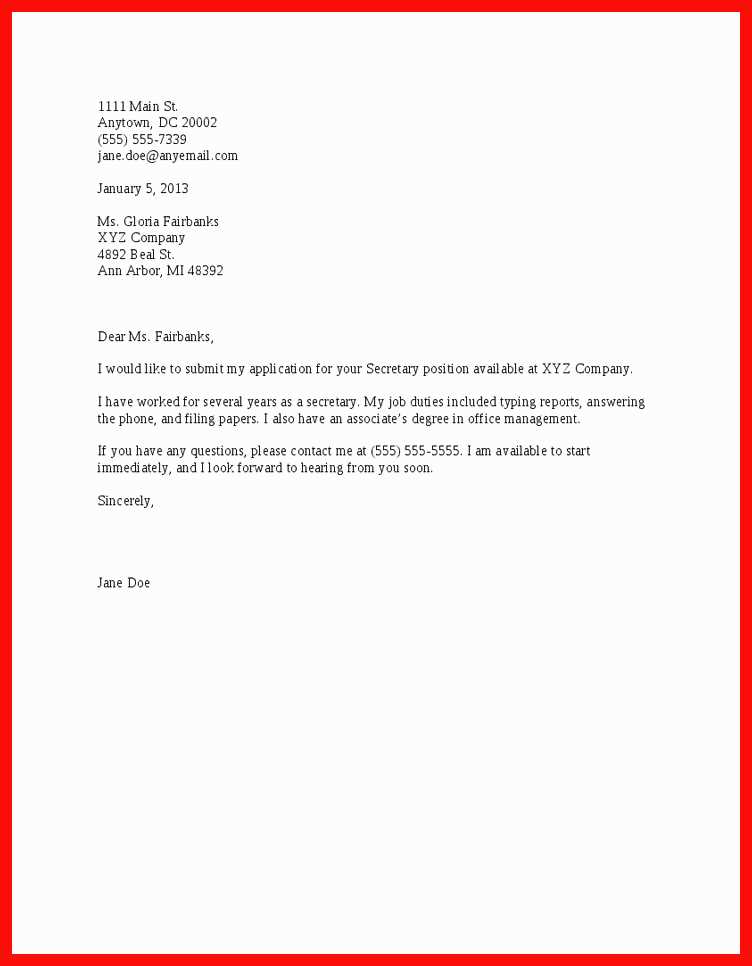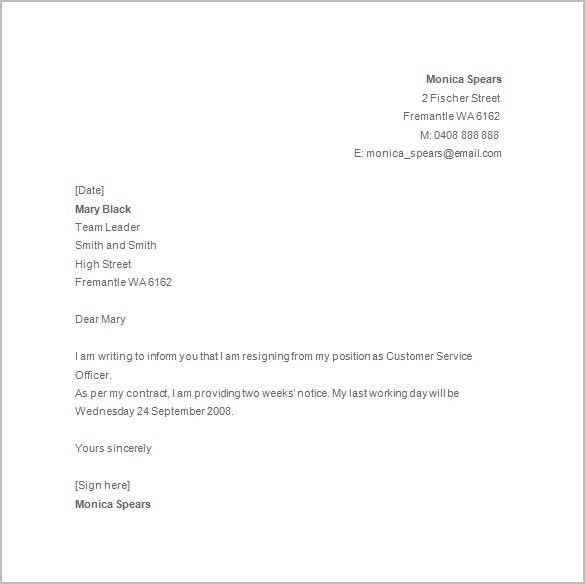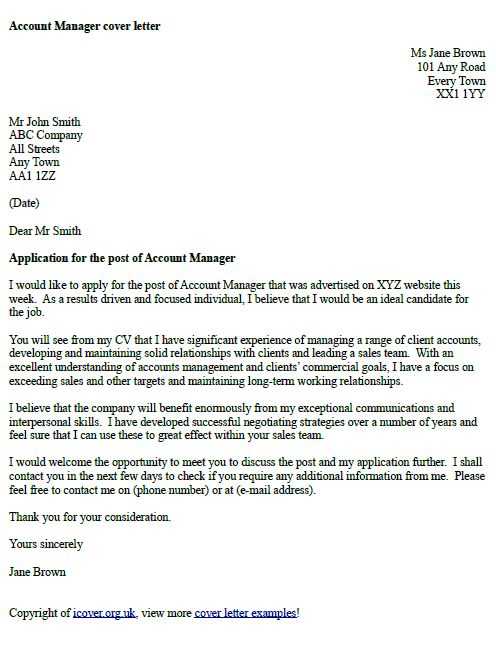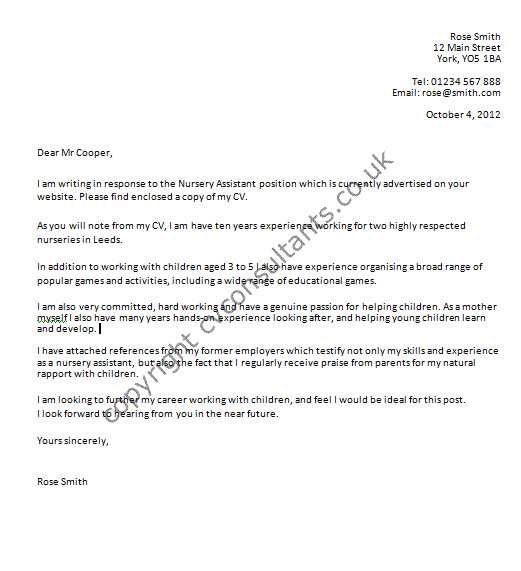Basic letter template uk

When writing a letter in the UK, clarity and structure matter. Whether it’s a formal letter to a company, a request, or a personal note, following the correct format is key. Here’s a basic template to guide your writing and ensure your message is professional and well-received.
1. Start with the sender’s details: At the top of the letter, include your name, address, and contact details. This makes it clear who the letter is coming from, especially if you’re sending it by post. If you’re writing an email, this part is optional.
2. Date: Below your contact information, include the date. This helps the recipient know when the letter was written and can be important for future reference.
3. Recipient’s Details: After the date, write the recipient’s name, title, and address. Make sure you have the correct spelling and title to avoid any misunderstandings.
4. Salutation: A polite greeting is essential. For formal letters, use “Dear [Title] [Surname]” or “Dear Sir/Madam” if you don’t know the recipient’s name.
5. The Body of the Letter: Start with a clear introduction of why you are writing. Stay focused and concise, providing all necessary information in an easy-to-read format. Break it down into paragraphs for readability.
6. Closing: End with a polite closing remark such as “Yours sincerely” if you know the recipient’s name, or “Yours faithfully” if you don’t. Follow it with your signature or name.
Using this basic template, your letter will appear professional and well-structured, making communication clear and efficient.
Basic Letter Template UK

Begin by placing your address in the top right corner of the page, ensuring it is aligned with the margin. Include the street name, city, and postcode. After your address, skip a line, and write the date aligned to the left.
Next, include the recipient’s name and address, starting on the left side beneath the date. Align the recipient’s details with the margin. Make sure to include their job title or position if applicable, followed by the street address, city, and postcode. Leave a line after this.
Start the body of the letter with a formal salutation, such as Dear Mr./Mrs./Ms. [Last Name], followed by a comma. If you’re unsure about the recipient’s gender, use the full name without a title (e.g., Dear [Full Name]).
The first paragraph should state the purpose of the letter concisely. Be clear about your intent, whether it’s a request, a response, or another type of communication.
In the following paragraphs, provide relevant details in a logical and easy-to-follow manner. Each paragraph should focus on a specific point. Make your points clearly, avoiding unnecessary details. Use short and direct sentences to maintain clarity.
Conclude with a formal closing like “Yours sincerely” if you used a salutation with the recipient’s name, or “Yours faithfully” if you started with a more generic salutation (e.g., Dear Sir/Madam). Leave a few lines for your signature before typing your full name beneath the closing. If applicable, add your job title below your name.
Lastly, if you are enclosing documents, write Enclosures at the bottom left corner, followed by a list of the enclosed items.
Choosing the Right Tone for Formal Correspondence

Maintain a polite yet straightforward tone to ensure your message is understood and respected. Here are key considerations:
- Be clear and concise: Avoid unnecessary details. Get straight to the point while remaining polite.
- Use formal language: Stick to conventional phrases and titles, such as “Dear Sir/Madam” or “Yours faithfully,” to show respect.
- Avoid slang or overly casual expressions: Formal communication should steer clear of informal language or colloquialisms.
- Stay neutral: Avoid overly emotional or biased language. Stick to facts and a neutral tone for professionalism.
- Match the recipient’s level of formality: Tailor your tone depending on whether you are writing to a colleague, a client, or a superior.
Proper Layout and Structure for UK Business Letters
Start with your name and address at the top left corner of the page. Skip a line and include the date, aligned to the left. After that, add the recipient’s name, title, and address, aligned to the left as well.
Use a formal greeting such as “Dear [Title] [Last Name],” followed by a comma. If you don’t know the recipient’s name, address the letter with “Dear Sir/Madam.” After the greeting, leave a space and start your letter’s body.
The body of the letter should be divided into clear paragraphs. Begin with the purpose of the letter in the opening paragraph, followed by supporting details in the next paragraphs. Keep the tone professional and to the point.
Conclude with a formal closing phrase like “Yours sincerely” if you know the recipient’s name, or “Yours faithfully” if you don’t. Leave a space and sign your name. If necessary, include your job title below your signature.
Ensure the letter is aligned to the left throughout. Margins should be standard, typically 1 inch (2.5 cm) on all sides. Make sure the font is clear, with a size of 12 points for readability.
Formatting Salutations and Closings in Professional Letters

Use formal salutations to convey respect. For example, “Dear Mr. Smith” or “Dear Dr. Johnson” is appropriate when addressing someone by title and last name. Avoid using first names unless you have an established relationship. If you don’t know the recipient’s gender, simply use their full name, such as “Dear Taylor Johnson.” If addressing a group, use “Dear Team” or “Dear Colleagues.”
When closing the letter, use “Yours sincerely” if you’ve addressed the recipient by name. “Yours faithfully” is used if the letter begins with “Dear Sir/Madam.” These closings maintain professionalism and clarity. If you prefer a less formal tone, you may opt for “Kind regards” or “Best regards,” but keep the overall tone consistent with the content of the letter.
Ensure there is a space between the closing phrase and your signature. Always leave a line for your name, and if relevant, include your title or position beneath your name. Double-check the format for consistency, especially in professional settings where small details matter.
Incorporating Contact Information Correctly
Place contact details at the top of the letter for easy access. Include the sender’s full name, address, phone number, and email. Position this information neatly on the left side of the page, separated by line breaks. For the recipient’s contact details, align them below the sender’s information, maintaining a consistent format. This approach helps the recipient easily find all contact details if needed.
Sender’s Contact Information Example
| Name | John Doe |
|---|---|
| Address | 123 Baker Street, London, W1U 8ED |
| Phone | +44 123 456 789 |
| [email protected] |
Recipient’s Contact Information Example
| Name | Jane Smith |
|---|---|
| Address | 456 Elm Street, Manchester, M1 1AA |
| Phone | +44 987 654 321 |
| [email protected] |
Ensure that all contact details are accurate and up-to-date. This avoids confusion or missed communication. For letters sent by post, using a formal letterhead or addressing block is common, while emails should start with the necessary details in the signature section. Keeping this consistent will make your communication professional and clear.
Common Mistakes to Avoid When Writing UK Letters
Make sure to follow the correct salutation. In UK letters, the most common mistake is using overly informal greetings. For a formal letter, always address the recipient by their full title and last name (e.g., “Dear Mr. Smith”). If unsure about gender, use the full name instead of a gendered title.
Incorrect Use of Punctuation
Avoid the use of unnecessary punctuation marks. In formal letters, do not use exclamation marks unless absolutely needed. Overuse of commas can also disrupt the flow of your writing, so opt for clear, concise sentences with proper punctuation for clarity.
Failure to Match Tone
Matching the tone to the letter’s purpose is critical. A common mistake is switching between too formal and too casual within the same letter. Ensure consistency throughout–formal for business correspondence and more relaxed for personal letters, while still maintaining a polite tone.
Adapting the Template for Different Types of UK Letters
Each type of letter in the UK has specific conventions that should be followed. These guidelines ensure clarity and professionalism, especially when adjusting a basic letter template.
For a formal letter, such as a job application or business correspondence, follow these adjustments:
- Use a formal greeting like “Dear Sir/Madam” or “To Whom It May Concern”.
- Start the letter with a clear introduction, stating the purpose right away.
- End with “Yours faithfully” if you don’t know the recipient’s name, or “Yours sincerely” if you do.
- Make sure to include a formal closing, like “Best regards,” followed by your name.
For an informal letter, such as a note to a friend or family member, the tone can be more relaxed:
- Use a friendly greeting like “Hi [Name]” or “Dear [Name]”.
- Personalize the content with casual language, and be direct with your request or message.
- End with a casual sign-off, like “Love,” or “Best wishes,” followed by your first name.
If writing a letter of complaint, ensure you are clear and concise while being firm but polite:
- State the issue clearly in the first paragraph.
- Provide relevant details, such as dates or names, to support your complaint.
- Conclude with a request for action or compensation and express your expectation for a timely response.
By adjusting the basic template to suit the type of letter you’re writing, you make sure your communication is appropriate for the situation.